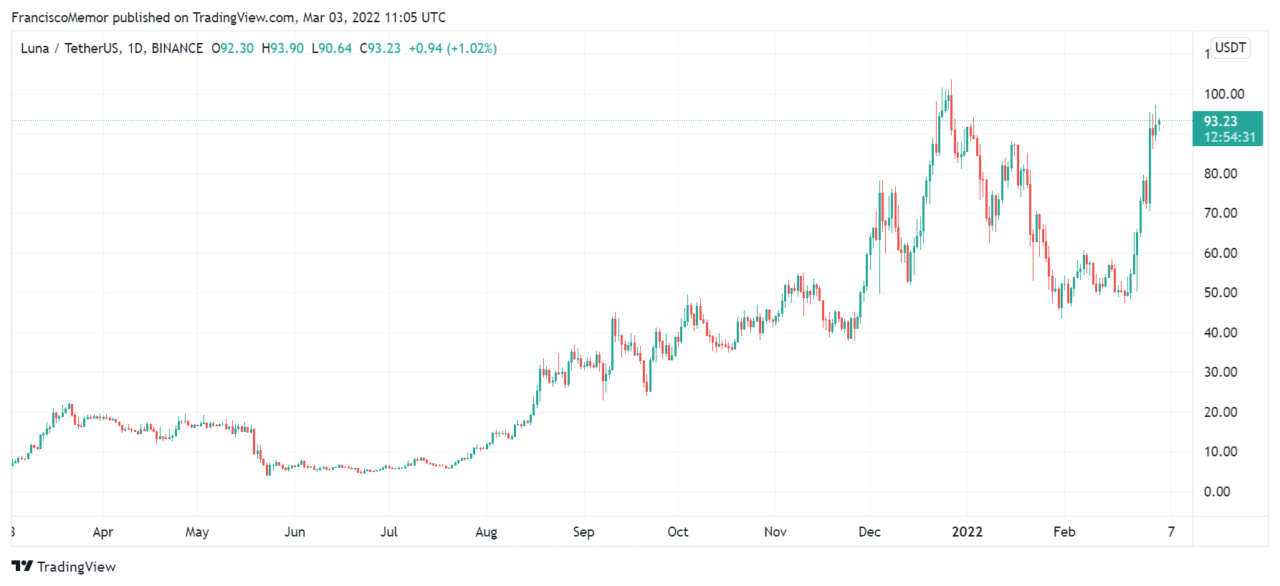The total value being staked on the Terra blockchain has topped the $30 billion mark as the price of its native token $LUNA is approaching its all-time amid a wider crypto market recovery in the face of a geopolitical crisis.
According to data from StakingRewards, 40.5% of LUNA’s circulating supply is now being staked, allowing token holders to earn rewards for helping secure the network. Current yearly rewards are at 6.8%.
Terra was developed by South Korean blockchain company Terraform Labs, which itself was founded in January 2018 by Danial Shin and Do Kwon. Terra’s mainnet was launched in April 2019 and its native token initially saw relatively muted price performance. Earlier this year, LUNA’s price started jumping.
Terra is a PoS blockchain with LUJNA being used “in the issuance of stablecoins (TerraSDRs), as a price stability mechanism, as well as for staking and network governance.” Its price has been surging partly because it supports smart contracts and, as such, decentralized applications. Its leading stablecoin UST is also set to be backed by a $1 billion BTC reserve.
LUNA is now trading at $93.3, down from a $103 all-time high seen late last year.

Late last year, the LUNA community approved a governance proposal to permanently burn 88 million tokens from the community pool, swapping it for Terra’s USDT stablecoin. The move has helped UST’s market capitalization surge.
In comparison, 74% of Solana’s circulating supply is being staked for a 5.93% yield, down from around 77% in November of last year. Users staking Ethereum, on the other hand, have committed 7.9% of the cryptocurrency’s supply for a 4.8% reward per year once Ethereum 2.0 is launched.
It’s worth noting cryptocurrency exchange Coinbase has estimated ETH staking yields could double after the network merges with the Proof-of-Stake Beacon Chain that is currently running alongside Ethereum’s mainnet. The move, which is expected “around June of this year,” would see yields rise as “rewards will incorporate net transaction (ex-base) fees currently paid to miners.”
According to CryptoCompare, staking on-chain is possible with cryptocurrencies using a Proof-of-Stake (PoS) consensus mechanism. PoS networks are often more energy-efficient than PoW networks and maintain a certain degree of decentralization.
DISCLAIMER
The views and opinions expressed by the author, or any people mentioned in this article, are for informational purposes only, and they do not constitute financial, investment, or other advice. Investing in or trading cryptoassets comes with a risk of financial loss.
IMAGE CREDIT
Featured image via Unsplash









